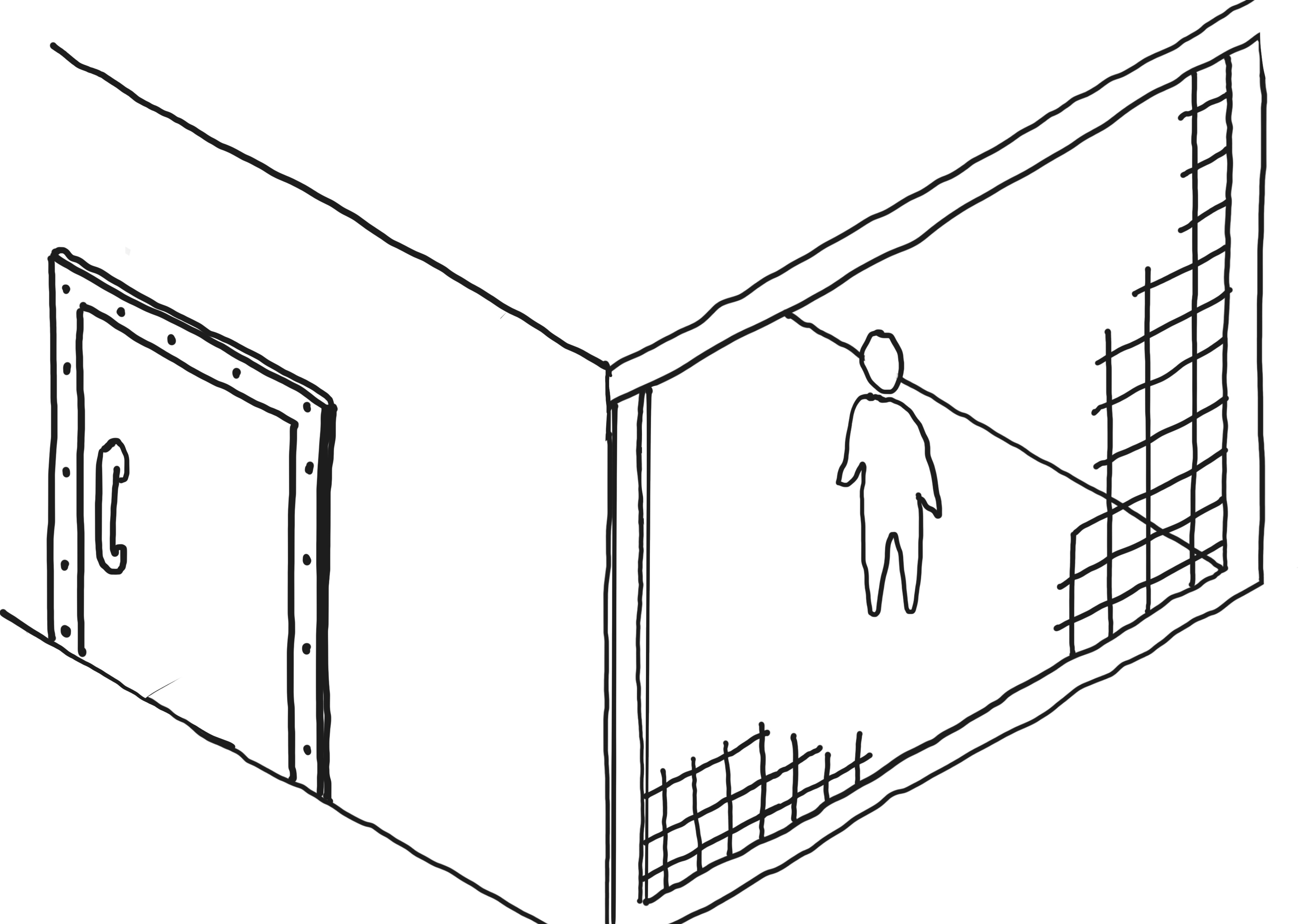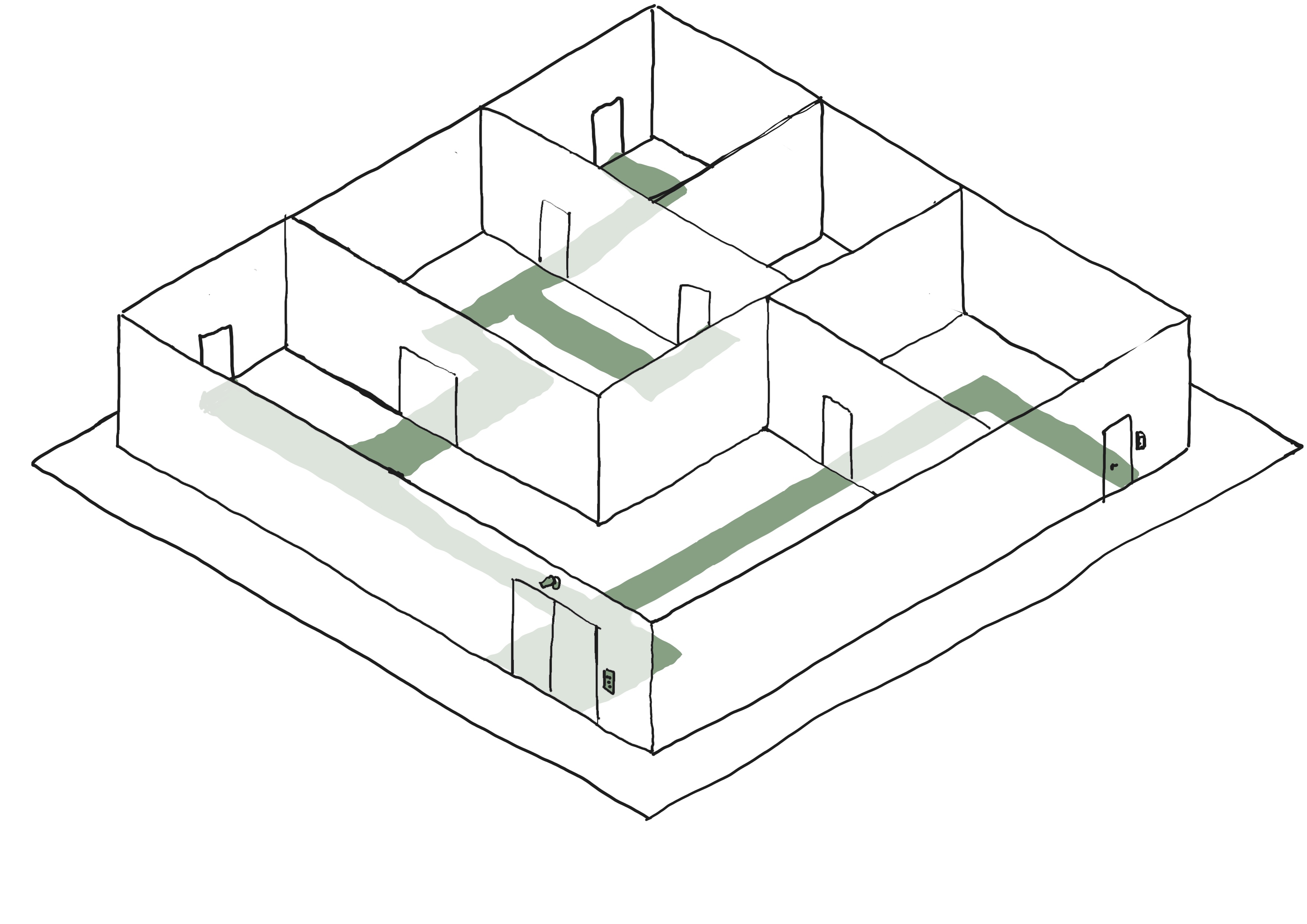Inside the building
Similarly to working on the exterior of the building and potential associated sites, a risk assessment should be made early in the process, when building new or adding security measures to the interior of an existing building. This is partly to set expectations in relation to the property developer's wishes regarding, e.g. the function of the building, aesthetic appearance and the well-being of the users, but also to establish an appropriate level of security. From this, it is possible to project which security measures should be included in the overall solution and how these measures can be integrated into the architecture.
Thus, protecting buildings requires great attention to all perspectives in the implementation of security solutions.
Below, you will find advice and considerations to include, when incorporating protective security into the architecture of your building.

Placement of rooms
It is essential to consider where in the building to place different spaces, depending on their function and use. E.g. it may be advantageous to move spaces for large gatherings away from the façade and further into the building or, at least, to omit large windows if such features are placed directly in the façade. In addition to greater visibility, large glass areas can present challenges in protecting against gunfire, attacks and blasts.
E.g. if a canteen with a terrace for aesthetic or health and safety reasons is to be located next to the façade, it should be located on a site that is difficult for an attacker to reach. In such a situation, it will usually also be necessary to reinforce the surrounding security layers, i.e., the perimeter or the stand-off zone.

Protected spaces and access routes
When setting up protected spaces such as a safe room, the security risk assessment should be followed so that the room/space is sized for the correct number of people, the timeframe they need to be able to stay there, and what needs may need to be met in the room – e.g., communication with the outside world, food and drink, and toilet facilities.
The space must also be designed in relation to the threat scenario on which the risk assessment is based. This should include consideration of:
- What impact force (attack scenarios and methods) the room must withstand over a specified time.
- Whether cold smoke and gas protection are required.
- Whether a separate oxygen supply is required.
- Whether installations are wired with fixed connections out of the building that are secured against tampering.
Another important consideration is how people get to the protected space in the event of an incident. It must be easy and quick for users to locate and make their way to the room. This is a consideration that should also be included in the emergency planning process.

Escape routes
When considering escape routes in a project, it is important to make some architectural considerations in relation to where you choose to place the escape routes. Here are some of the questions to consider:
- Who should be able to use the escape route?
- How many people should be able to escape via the escape route?
- Where will you evacuate to? Is it somewhere else in the building or out in the open?
- Is there a different route away from the area to which you are evacuating, and is it possible for assistance from the outside to reach it?
- What are the risks of establishing an escape route and assembly point at the location?
The balancing of expectations with the property developer and a risk assessment will help to clarify these issues.
It is important to be aware that escape routes and any active fire protection systems can be misused for unauthorised access to a building. The possibility of using a two-detector dependency principle could be investigated, making unauthorised activation of a building's fire protection system more complex, and thus limiting the possibility of misuse of the building's escape route system. In relation to ventilation openings, attention should be paid to place them out of reach of unauthorised persons. If this is not possible, these openings in the building facade should be secured.

